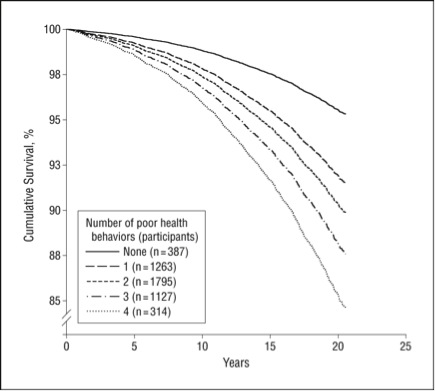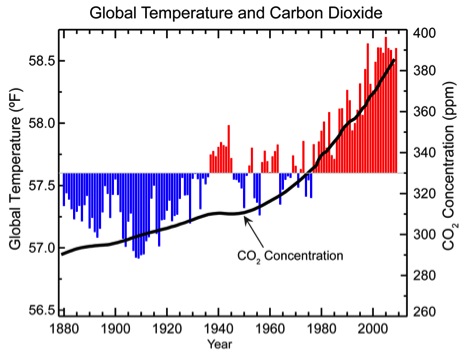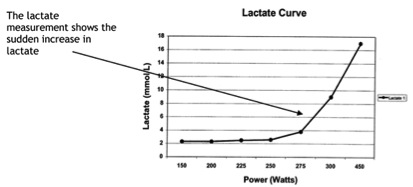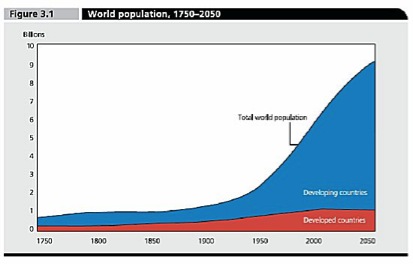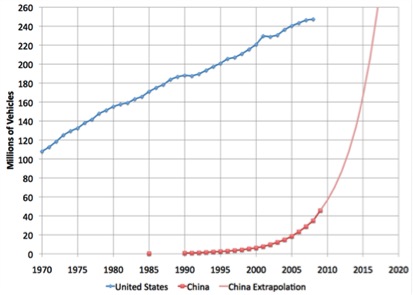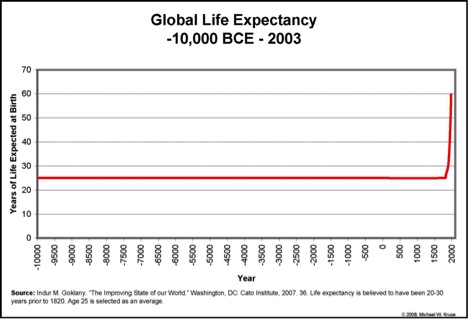Archive for the ‘Current Events’ Category
Health Guidelines: Are We Making Them Too Complicated?
In an e-mail titled “Too Close For Comfort…..” my Colleague Doug Seals sent me a link of a satire laced piece from the Onion about how hard it is to get people to change their lifestyles based on “studies” and scientific data. This Onion piece also intersects with some of the ideas in my last post related to the frustrating fact that guidelines frequently change as new information emerges. Other colleagues have mentioned to me that the sheer volume of goals and guidelines that are being released are at best confusing. That having been said, here are six health guidelines and ideas that have stood the test of time and are backed by solid evidence that is unlikely to change.
- Don’t Smoke.
- Be physically active and avoid sitting for prolonged periods of time. 150 minutes per week of moderate intensity (brisk walking) physical activity is the key number. If you have even less time, here is a link to a brief high intensity work out you can do with minimal equipment. Physical activity also blunts the impact of risk factors like high blood pressure, diabetes, and cholesterol on your health. In addition to protecting you from cardiovascular disease and diabetes, physical activity is the one thing that seems to reduce the risk and even slow the progression of cognitive impairment as we age.
- Don’t get fat. There are some caveats here but they are subtle and on a population wide basis medical problems associated with body weight really start to take off for people with BMIs greater than 30.
- Eat a bit better. I don’t think most people have to be a fanatic about diet, but watch how much red meat, fried/fatty foods, and sugar you consume. Eat more fruits, vegetables and whole grains. As I recently pointed out, do this and watch the pounds melt away.
- Don’t drink too much. One or two drinks most days are fine and may in fact be good for your overall health. However, more than that is a slippery slope.
- Stay engaged in life. People who have a sense of autonomy over their own destiny and connections with others tend to live longer. A bit of optimism is also a good thing.
Guideline Followers Live Longer and Age Slower
The figure below is from a 2010 paper that looked at the impact of four health behaviors (smoking, physical activity, drinking, diet) on survival over 20 years in about 5,000 adults from England and Scotland. Here are two key points from the paper:
- “Those with 4 compared with those with no poor health behaviors had an all-cause mortality risk equivalent to being 12 years older.”
- “The combined effect of poor health behaviors on mortality was substantial, indicating that modest, but sustained, improvements to diet and lifestyle could have significant public health benefits.”
Summary
What constitutes healthy behavior is pretty straight forward. If we address these six issues as individuals, via public health measures, and implement things like sin taxes and risk adjusted insurance premiums; our individual and collective health will improve dramatically.
Medical Ignorance vs. Dietary Salt and Breast Cancer
Recent news reports have highlighted uncertainty about dietary sodium guidelines and also the diagnosis and treatment of breast cancer. When the breast cancer story came out a friend of mine e-mailed and asked for help in making sense of it all. I want to share parts of my response to her with you and also how it applies to things like the shifting dietary salt guidelines. Here are some things about medical “knowledge” that are not widely appreciated:
- We have the ability to detect “abnormalities” that are at the edge of our knowledge.
- When we detect these things, what do we do…….everything, nothing, something in between?
- There is frequently a bias in medicine to do more. However, every intervention has risks and potential unintended consequences. Where is the balance? How much risk are you comfortable with? How can Drs. explain these nuances to patients?
- Clinical trials are great, but they are average results and the best scientific advice for thousands of people may not be the best for you. For all trials there are responders, non-responders and sometimes even adverse responders. This is especially true for salt and blood pressure. At some level it is a roulette wheel, and all we can do is play the odds.
- Progress against cancer, especially solid tumors, has been really slow. There are lots of reasons for this including the idea that there are metastases by the time things are detected. There are also issues related to basic tumor biology and how fast tumors grow vs. the toxicity of drugs for other tissues. Finally, tumors have a tremendous ability to adapt and work around drugs.
- We are trapped in cycles of relative ignorance, over simplified dogmatic responses, followed by more insight. For example the current idea is that when we can genetically finger print individual cancers “cures” will flow from this knowledge. A more sober interpretation might be that we will be able to pick and develop better drugs for each individual and improve the odds of a better outcome (note I did not say cure).
- Disease advocacy groups are wonderful, but sometimes the culture of disease advocacy leads to sound bited messages for really complex things.
- Things in a number of areas of medicine that had pretty hard core guidelines when I started medical school in the early 80s (for example how we treat heart attack and heart failure, and how we set the ventilators in the intensive care unit) have evolved or even changed 180 degrees since that time. Outcomes are better but these sorts of sea changes are challenging for everyone. This happens all the time.
As a result of all of these things (and more) there are lots of educated guesses in medicine. There is also tension related to research and the need to make “constructive mistakes” to further knowledge and offering people “error free” state of the art care, with the ambiguous caveat that the state of the art changes. At some level, the more we know the less we know.
Exercise vs. Global Warming: Gradually Then Suddenly?
In early May atmospheric CO2 reached 400 parts per million (PPM). This was seen as a major milestone in global warming and a harbinger of more bad news to come. The figures below are for atmospheric CO2 since the late 1950s and the relationship between atmospheric CO2 and global temperature since 1880.
Climate Change Skeptics
There is skepticism about the reality of climate change and the extent to which it is being caused by human activity. Some of this is highly political and driven by all sorts of other considerations, notably money and power. However, on balance the weight of scientific evidence favors a major role for human activity in global warming and I find the arguments for this position much more convincing than the arguments against it. I am a physiologist/physician not an ecologist, economist, or atmospheric physicist, so what do I have to add?
Gradually Then Suddenly!
With that question as a background, here is what a physiologist has to add along with the relevance of Hemingway’s famous lines about bankruptcy in “The Sun Also Rises”:
“How did you go bankrupt?’ Bill asked. ‘Two ways,’ Mike said. ‘Gradually and then suddenly.’
Gradually then suddenly describes a lot of things in physiology and biology. For example when people stand up the blood pools in their legs away from the heart and this tends to make blood pressure fall. In response the nervous system constricts the blood vessels and increases heart rate to keep blood pressure normal. This works well, but only for a while. If people stand up for too long eventually the responses noted above “fail” and most of us will faint suddenly. The video clip shows some examples of just how fast this can happen.
click here for video
Another good example of gradually then suddenly comes from exercise physiology. As people go from rest to mild or moderate exercise the lactic acid levels in their blood do not increase much and then the levels start to rise a lot as they go harder. The figure below shows an example of what is seen during an exercise test in an elite athlete.
Exercise Metabolism vs. Earth’s Metabolism?
The exercise example is perhaps a good analogy for climate change. Our ability to sustain exercise for prolonged periods of time starts to drop at exercise levels above the lactate threshold. Metabolism ramps up and not much happens for a while and then a lot happens above the “lactate threshold” that can limit exercise duration. In healthy young people metabolism can increase 5-6 times above rest without too much difficulty. In elite endurance athletes, metabolic rate can increase perhaps 15 times above rest before things get too out of balance. If we think of global CO2 production as a form of metabolism then perhaps the earth as an organism can adapt to pretty dramatic increases without much happening. The figure below shows what has happened to global CO2 production since industrialization. Who knows exactly where the Earth’s CO2 climate threshold might be, but if we take the value at around 1900 as “baseline” we are above the 5-6 fold increase in metabolism that can be tolerated by untrained people. It also looks to me like we are getting close to the 15 fold increase that can be tolerated by elite endurance athletes. How much farther do we dare push these curves before something really dramatic happens to the environment over a short period of time?
The Price of Denial
In my last post I pointed out that as the developing world gets richer and older there will be even more pressure on resource consumption and energy use. In rich countries like the U.S. denial about the implications of aging for things like Medicare and Social Security is leading to political gridlock, a lack of creative solutions, and long term financial choices that are not pretty. The same is true for Earth as a whole when it comes to denial about climate change and the human factors driving it. When has denial ever been a good policy option?
More Demographic Reality!
In the post a couple of days ago I tried to give you some big picture information related to world population trends and aging. This is part of my ongoing “educational campaign” for demographic reality related to how we approach the world as individuals, organizations, and countries. Today I want to share to more graphs with you about how unprepared we are for the future of the world.
Population Growth 1750-2050
The figure below shows both historical and projected increases in population. Currently there are about 7 billion people on earth and that number is projected to rise to about 9 billion by mid-century and then perhaps level off. All of the projected population growth is likely to happen in the developing world. No population growth or a slight decline is projected in the developed countries of Europe, North America, Japan, and Australia/New Zealand. In 2050 there will be 8 billion people in the developing world.
What Happens When They Get Cars?
The next figure shows the number of vehicles (essentially cars and trucks) in the U.S. and the number of vehicles in China along with the projected growth in China over the next few years. I picked this slide because people from all over the world want cars when they “join the middle class”, and my bet is that cars are a pretty good marker for consumption of other energy and resource intensive items like refrigerators, TVs, personal computers, meat and microwave ovens. So even if the graph below over estimates the rise in car ownership in China (if anything it is an underestimate), what will the impact on world resource use be if a couple of billion more people join the middle class between now and 2050?
Thoughts About These Trends
I don’t begrudge anyone the desire to live a middle class developed world life with cars and other gizmos. To say folks in the developing world should fundamentally not have what we have seems hypocritical at best. So do we severely downsize and conserve in the developed world? Do we all become vegetarians, ride our bikes, live in small houses, and take public transportation? Even if we all cut our consumption of “stuff” by 50% or more, how long will it be until this level conservation is overwhelmed by the sheer number of people living “better” in the developing world? Are we headed towards some sort of total environmental and economic collapse, or should we start to discuss a combination of conservation, mitigation, and lesser of two evil choices (like nuclear power) to avoid collapse? If so what are the options and who decides? At some level we can compete country by country and face almost certain collapse, at another level we can collaborate creatively and perhaps get by. We should also keep in mind the words of Arnold Toynbee as we think about the future:
“Civilizations die from suicide, not from murder”
The Aging World in 3 Graphs
I was talking to some healthy and vital colleagues in their early 60s about retirement and “warned” them to be careful about how soon they retired because as health guideline followers, they would likely live many, many more years. For my friends the issue is not financial security, but the stimulating nature of their jobs, and their roles as mentors/teachers and super skilled physicians. From my perspective the “aging world” is one of a couple main drivers of the challenges facing us all including the political and financial issues related to budgets, debt, and health care costs. This is true both for the United States and the rest of the world as well. That having been said, I want to show you three graphs about the history of aging.
Nothing Changed Until the Industrial Revolution
The first graph is from a book “The Improving State of the World”. It shows that for most of human history life expectancy was pretty static and nothing really changed until the industrial revolution starting in the 1700s. The extent to which the industrial revolution and the invention of the steam engine “caused” life expectancy to rise is unclear. During that time frame “modern” ideas about sanitation, nutrition, improved agriculture, public health etc. started to emerge as well. So a lot was happening related to the development of the world we live in today.
Population Pyramids and Scotland
The second graph is shows the population vs. age structure of Scotland. I chose Scotland because this figure is a typical example of what has happened in the developed, “rich” parts of the world over the last 100 plus years and this graph was especially well done. In 1911 there was a classic population pyramid with a lot of young people and very few older people. As infant mortality and other things that kill young people were conquered over the next 40 years, the base of the pyramid had really changed by 1951. By 2001 there were as many or more middle aged than young people. The wide “waist” of the pyramid associated with the baby boom will also swell the growth of people over 65 by 2031. This figure also shows that more women make it to old age than men. The implications of these shifting pyramids for things like the ratio of workers to retirees, health care costs and pension costs are immense. Here is a link to a Wiki site on the whole topic of population pyramids.
The Future & Population Pyramids
The final graph is from Australia and shows what is projected happen to the population pyramid there over the rest of the century. The projected data is superimposed over the 1998 data. Again, these trends are pretty typical for the developed world and similar trends are starting to emerge in places like China and other developing countries. They clearly demonstrate that the cultural, political, and financial discussions we are currently having about the aging population are going to continue. The massive rise in the top part of the pyramids (people older than 80 or even 90) is likely to be especially challenging.
Demographic Reality?
You can look at these graphs, especially the last two, all sorts of ways. However, it seems to me that as individuals, cultures, countries, and “the world” we need to have a serious conversation about what policies make sense given the coming demographic reality. For example, should the retirement age remain 65? What are reasonable expectations to place on young people for support of the “old” as the population structure changes? How should pensions and social insurance programs be structured? There are many nuances to these questions but the fundamental demographic issues are unlikely to change.
Obesity: Who is Responsible?
On a recent plane ride I had a window seat with a trim lady in the aisle seat. The middle seat was then occupied by a short but large man who sat down and immediately fell asleep and started to snore. When he woke up just prior to takeoff he apologized and commented “the Drs. tell me there is nothing they can do about it…….” This man pretty obviously has obstructive sleep apnea (OSA) and he also told me that he does not bring his CPAP device while traveling due to inconvenience. Obesity is a major cause of cardiovascular problems, diabetes and early death. It is also the major cause of sleep apnea which is a dangerous condition associated with all sorts of medical problems including hypertension, diabetes, cognitive impairment, and heart disease to name a few. The issue of large (fat) people on planes is very controversial and some airlines have policies requiring people to buy two seats. However, I want to talk about the “they” concept noted above.
Nothing “They” Can Do About It?
When the gentleman next to me said “there is nothing they can do about it,” my internal response was something like, “You are right, Drs. don’t have much to offer you, but there is something you can do about it, namely lose weight.” I held my tongue and went back to my book. However, this experience got me thinking about who is responsible for what, especially when it concerns their own health. This brief conversation also raises issues about how things like insurance premiums should be set for people with controllable diseases, conditions, and/or lifestyle choices.
Is Obesity Contagious?
Losing weight and keeping it off is hard but possible in our obesogenic world. One emerging argument is that obesity is “contagious” and that it travels in social networks with the behavior of friends and families having a major influence on body weight and things like physical activity. This idea is not uniformly accepted, but it is an interesting concept that might stimulate new ideas about how to address the obesity epidemic. Here is a link to an interesting paper on Facebook preferences and body weight; can social networks be used to turn the obesity epidemic around?
Should Insurance Premiums be Adjusted?
One concern is that as long as health insurance premiums don’t consider lifestyle related diseases and risk factors, people that make unhealthy choices are economically shielded from the costs of their behavior. This is also one of the main arguments for sin taxes, and this topic has been in the news recently based on proposals in California to limit the ability of Obamacare to charge higher health insurance premiums for smokers. It is hard to understand the rationale for this move in California. We should also remember that most other forms of insurance are risk adjusted based on our behavior and choices. Why should health insurance be different?
Summary
The U.S. is having major and prolonged discussions about health care costs, outcomes, and payment schemes. To some extent this is also going on in the rest of the world. What strikes me in this whole collection of discussions is how little attention is being paid to policies that promote increased personal responsibility, and the extent to which any of us should pay for “bad behavior and choices” by others. Where do we draw the line? As a society we are all in it together….. up to a point.
How I Lost 10 Pounds
Today we are taking a break from data driven topics and things in the news. Over the last 4-5 months I have lost about 10 pounds or perhaps a bit more (5kg). I am tall, about 6’5” (1.95m) and weighed perhaps 206-210 pounds (93-95kg) before I started to lose weight. With just a few exceptions I have exercised daily for the last 38-40 years. I am now about 196-198 pounds (88-90 kgs). How did this happen? Here are the reasons I can come up with:
- I continued to exercise 30-60 minutes per day during the week and a bit more on weekend days. Except on vacation, almost all of this was indoors cycling on a trainer, running on the treadmill, or swimming. It has been a very, very long winter in Minnesota.
- As I have noted in earlier blog posts on interval training and what to do during the winter, a lot of this has been relatively high intensity training.
- I added circuit training with body weight exercises like burpees to go with the weight training, ab work and push-ups I had been doing for a long time.
- The first three factors are not much different than what I have done for years except for the circuit training. The other big thing has been that my wife and I made a conscious decision to get the chips, ice cream, cookies, and (most) of the soda out of the house. I also encouraged people to stop bringing “treats” to the lab. When I have been hungry during the day I have tried to “reach for an apple” or protein bar.
What is interesting is that after a few months of avoiding junk food I don’t miss the chips, and when I occasionally have more than a few I feel really full and sort of uncomfortable. The ice is finally off the street and I am riding my bike to work again and the days are longer. It will be interesting to see what happens over the summer when my physical activity picks up. Will my weight go down a bit more? In terms of diet my recent observations suggest that limiting the availability of junk food can have a big effect on body weight.
Terrorism vs Learned Helplessness
The events in Boston have me thinking more about “learned helplessness” and how we do or don’t respond to difficult and sometimes tragic events. I want to give you two examples from the world of sports about how to respond. In contrast to the bullying techniques used by some coaches and authority figures, the legendary football coaches Eddie Robinson and Jake Gaither took another approach. These men coached at segregated colleges in the U.S. South and developed an incredible number of outstanding players who were also outstanding people. At some level they experienced a sort of daily slow-motion terrorism as a result of institutionalized racism with an implicit threat of violence against those who spoke out. Here is what Robinson said reflecting late in life.
“When I first started coaching, my state dictated to me where I had to go, when I played and who I played. I hold no grudges and I don’t have a chip on my shoulder. You can’t unring a bell. I played as long as I could play, whenever I could play and as hard as I could play. How else can you judge me, except for what I accomplish?”
The clip below is from Frank Shorter last week. Shorter won the 1972 Olympic Marathon a few days after the terrorist attack on the Olympics and he was at Boston when the bombs went off. The horror he describes is palpable, but the important part of his reflections come later in the interview when he discusses how he was able to focus amid the chaos in Munich.
click here for video
Do What You Can
Robinson, Gaither, and Shorter remind us all that life is ultimately about how we respond in situations that we don’t control and that the best choice is to be proactive.
You are currently browsing the archives for the Current Events category.

